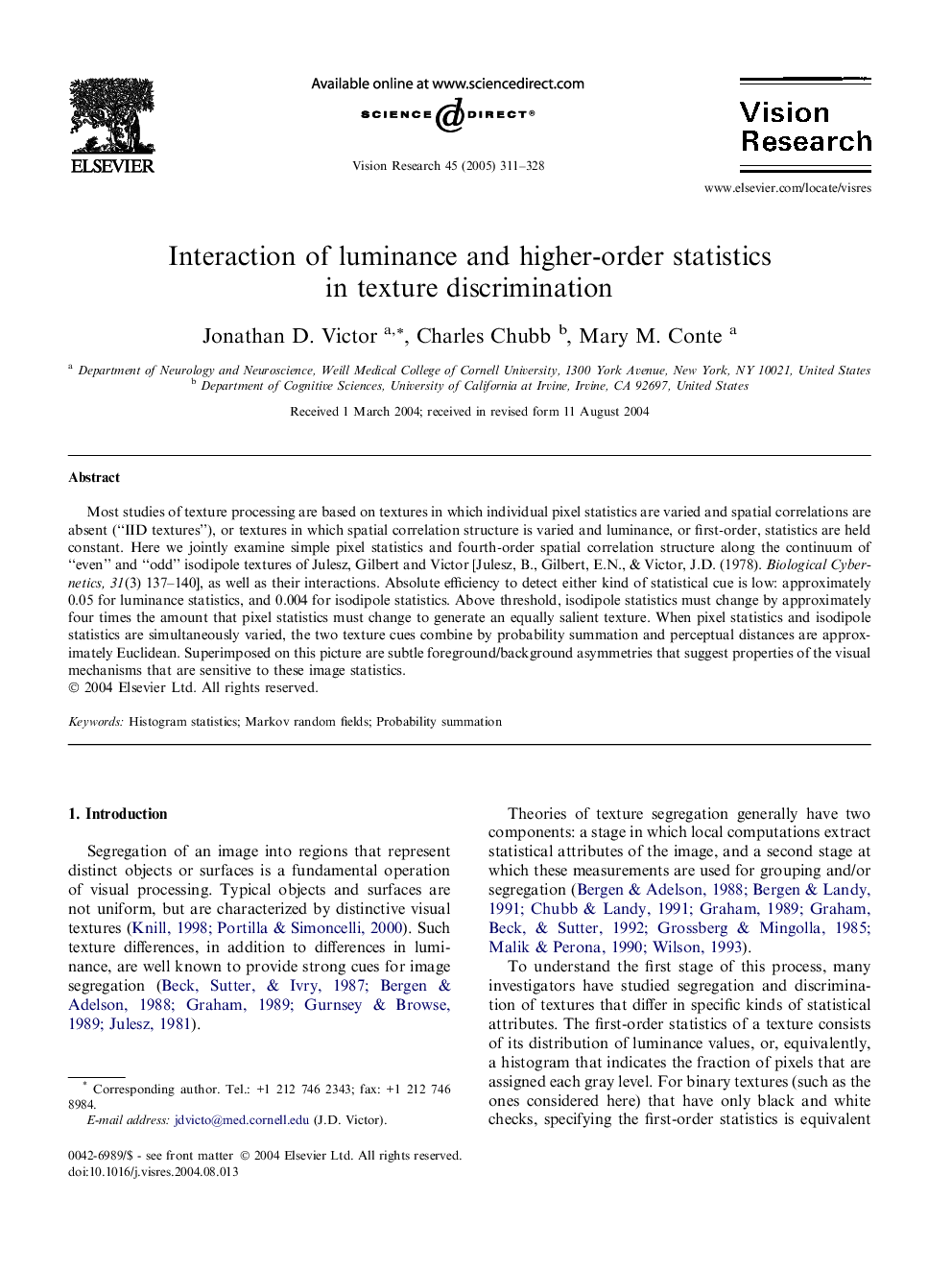| Article ID | Journal | Published Year | Pages | File Type |
|---|---|---|---|---|
| 9348844 | Vision Research | 2005 | 18 Pages |
Abstract
Most studies of texture processing are based on textures in which individual pixel statistics are varied and spatial correlations are absent (“IID textures”), or textures in which spatial correlation structure is varied and luminance, or first-order, statistics are held constant. Here we jointly examine simple pixel statistics and fourth-order spatial correlation structure along the continuum of “even” and “odd” isodipole textures of Julesz, Gilbert and Victor [Julesz, B., Gilbert, E.N., & Victor, J.D. (1978). Biological Cybernetics, 31(3) 137-140], as well as their interactions. Absolute efficiency to detect either kind of statistical cue is low: approximately 0.05 for luminance statistics, and 0.004 for isodipole statistics. Above threshold, isodipole statistics must change by approximately four times the amount that pixel statistics must change to generate an equally salient texture. When pixel statistics and isodipole statistics are simultaneously varied, the two texture cues combine by probability summation and perceptual distances are approximately Euclidean. Superimposed on this picture are subtle foreground/background asymmetries that suggest properties of the visual mechanisms that are sensitive to these image statistics.
Related Topics
Life Sciences
Neuroscience
Sensory Systems
Authors
Jonathan D. Victor, Charles Chubb, Mary M. Conte,
